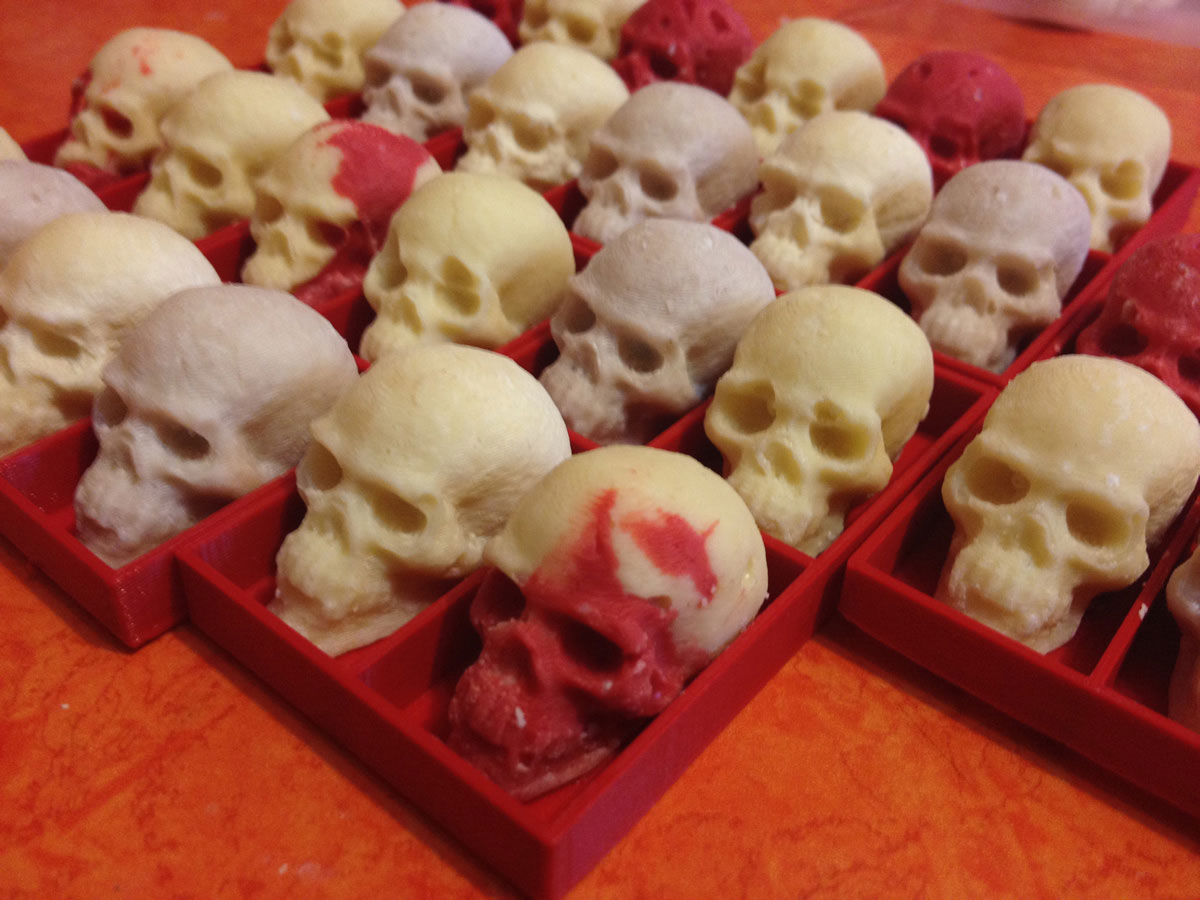Every Halloween I make treats to give away. I don a costume and distribute them to everyone I meet during my Halloween travels. I call it “reverse trick-o-treating.” During October of 2012, I created a 3D-printed chocolate mold maker so I could create multiple batches of chocolates and individual trays in which to place the chocolates before bagging them. To cast the chocolates, I used food-safe silicone to make the final chocolate mold from the 3D-printed mold maker.
I had scanned the skull a few months earlier using 123D Catch and had already created a 3D printed necklace with it for my Kali Halloween costume, which I wore when I handed out the chocolates.
I used an OpenSCAD script to make a mashup of a parametric box (by Thingiverse user acker) and my skull to create the mold maker. The trays for the chocolates were created using the same parametric box script.

The candy trays were originally printed in PLA, and were only used for presenting (not molding) the food. If you’re worried, use a layer of parchment or wax paper to separate the skulls from the tray . Or skip the PLA all together and use a FDA approved polymers for direct food contact/containers like Taulman t-glase (PETT), which I’m now recommending instead of PLA.
Here are the files you’ll need:
- The Chocolate Skull Mold Maker and trays
- Skull with Pointed Teeth (cleaned and repaired scan)
- The original skull scan (before cleanup) is available from 123D Catch

Design Your Own Mold in OpenSCAD
If you want to design your own mold instead of using the skull mold file included with the Chocolate Skull Mold Maker (thingiverse.com/thing:33432), you can edit skullCandyMold.scad to use your own object.
I designed this mold using a mashup of an OpenSCAD parametric box (by Thingiverse user acker) and my scanned skull.
Before you make any changes, I suggest that you play around with the mold code as is. For that to work, make sure the vampireSkull_0.2.stl is located in the same directory as the OpenSCAD file.
Once you’re sure it’s working, you can substitute your own STL for the mold: just change the “filename” variable to the name of your STL. Make sure your STL is in the same directory as the .scad file.
Here’s a render of the mold maker in OpenSCAD:









